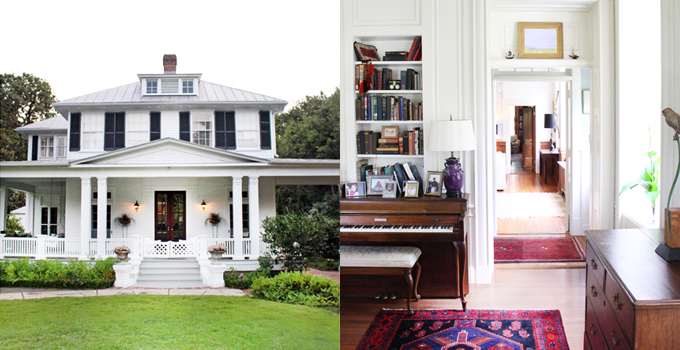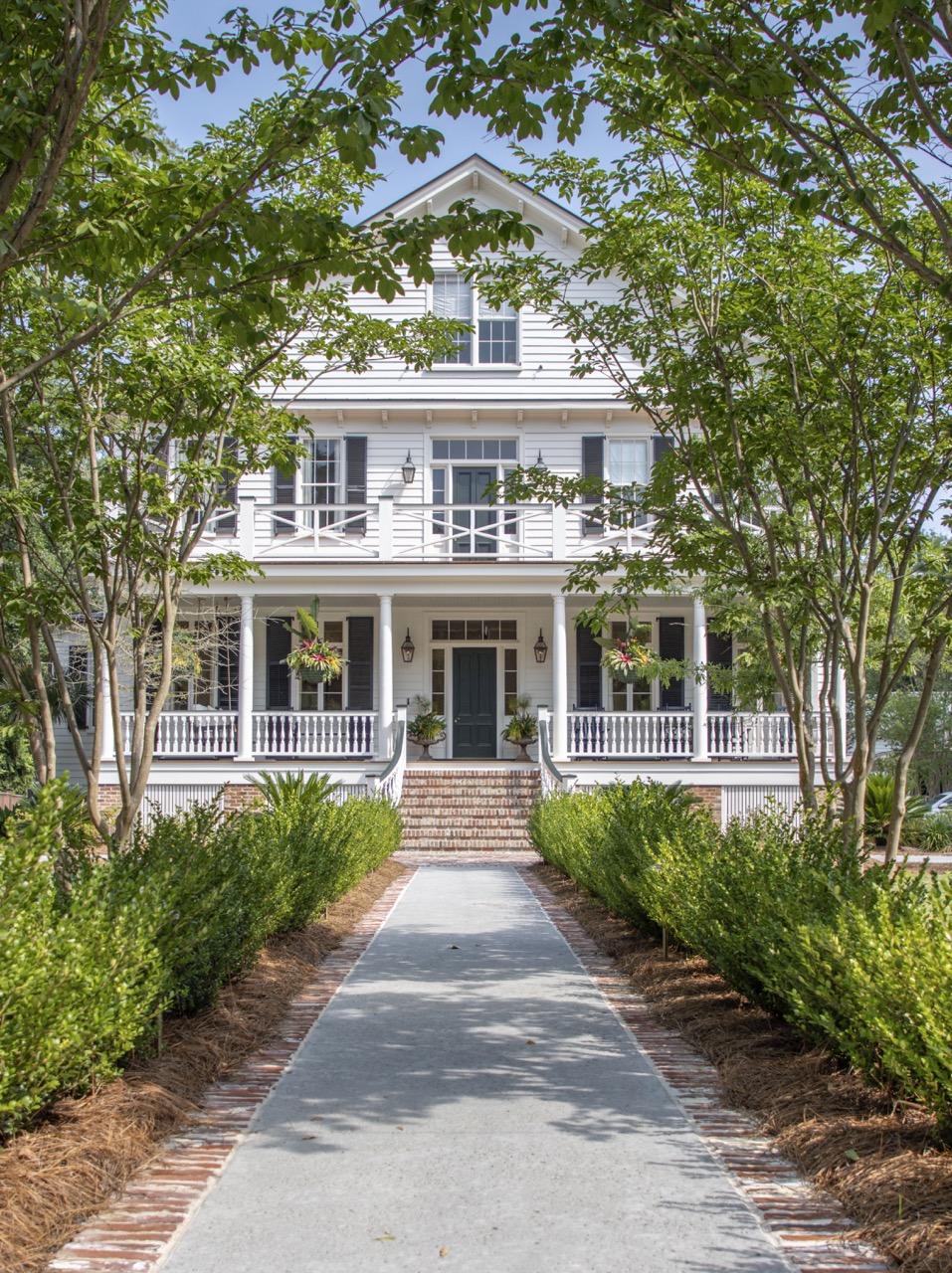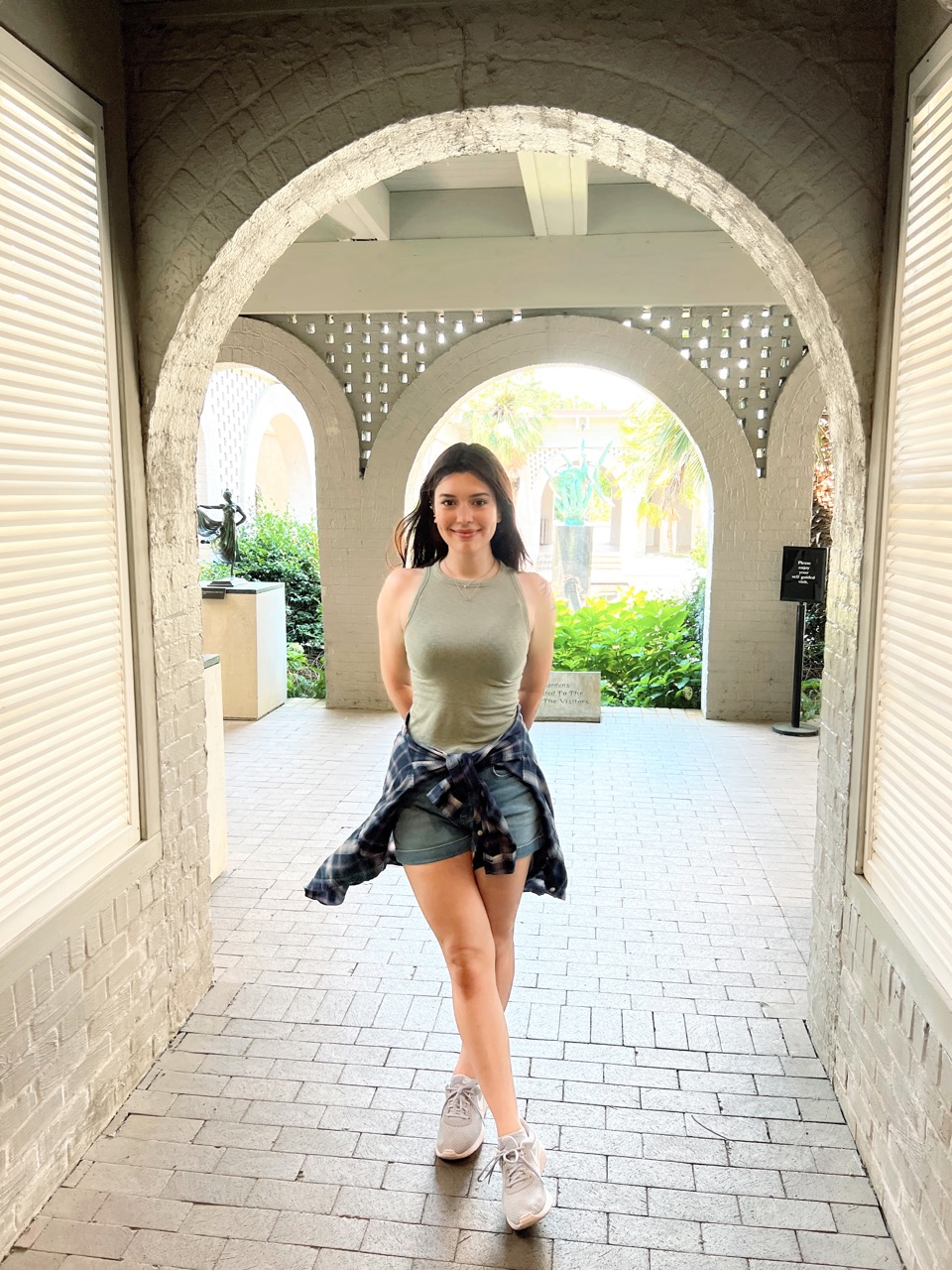BUILT BY A LUMBERMAN OF YESTERYEAR, FLOWERS AND FAMILY FLOURISH IN THE LIGHT OF PAM AND BRANDT SHELBOURNE’S HISTORIC HOME.
Light streaming through the windows of Pam and Brandt Shelbourne’s dining room falls across a wood floor that glows with the soft patina of age. It comes to rest on the natural finish of a massive pine table in the center of the room where twelve-year-old Felicity Shelbourne sits. “I think the light is what I like best about this room,” she says of the warm and inviting space.
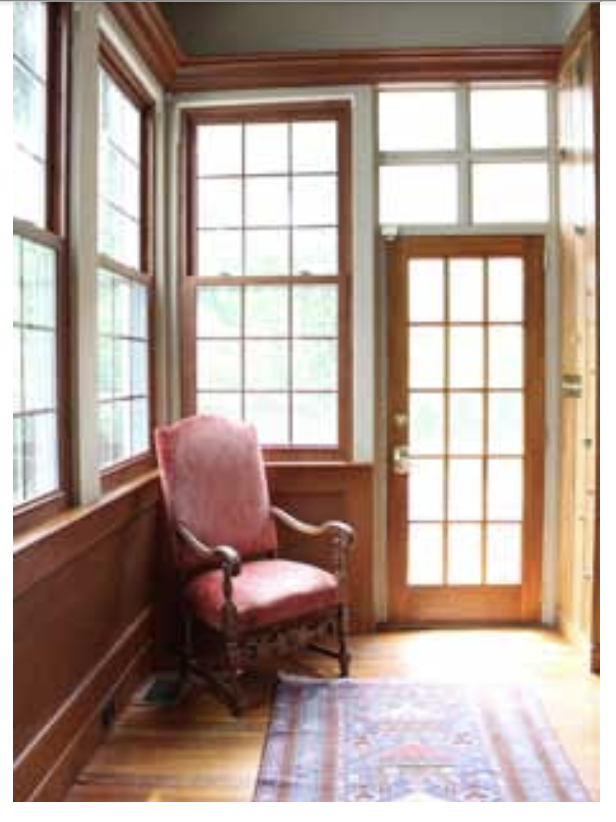
Felicity gives considerable thought before answering the question of what she likes best about Camellia Walk, the historic home her family has occupied since 1997. Given the many virtues of the house and grounds, her answer is surprisingly insightful.
When the family outgrew their Mt. Pleasant home, the Shelbournes looked to his home town to move Brandt’s law practice and raise their four children. The large, historic Summerville home had room for the family to grow, which it did later with the arrival of two more daughters. The house that had once seemed cavernous was a perfect fit for their three sons and three daughters, and Summerville proved to be the ideal place for the family.
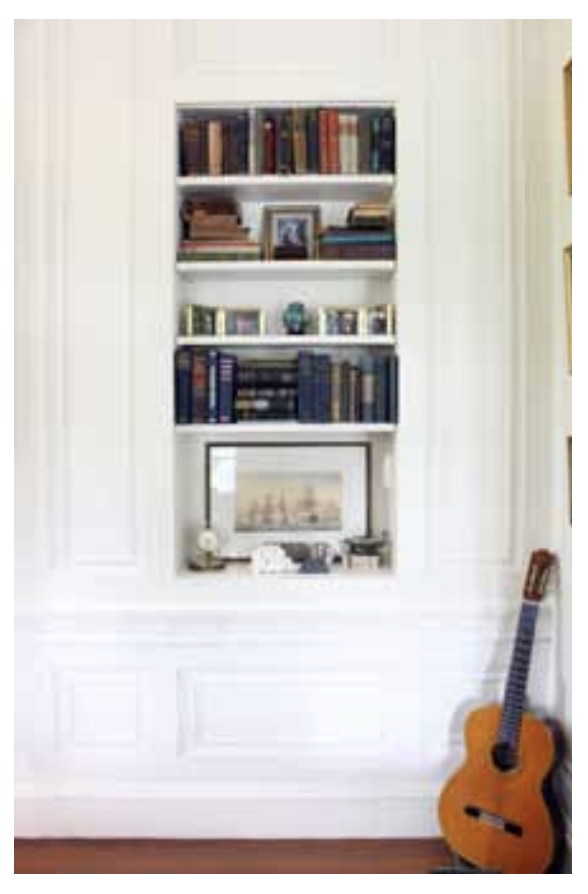
The Shelbournes are only the third family in over a century to reside in the home built in 1910 by lumberman Cannon Prettyman. Prettyman, whose family moved to Summerville from West Virginia and purchased 75,000 acres of woodlands in the area, was responsible for the introduction of the West Virginia Pulp and Paper Company to the region. A small green cottage on the property has the distinction of being the original office of the Charleston branch of West Virginia Pulp and Paper Company. Prettyman was also an active member of the Camellia Society, and the exotic species he collected still flourish on the property.
The house is said to be built on the foundation of a previous structure, and bricks from that structure were used to construct the residence’s fence and walkways. The name “Camellia Walk,” was bestowed on it in 1994 by second owners, Dr. Joel and Lena Cox, who briefly shared the gracious home with visitors as a bed and breakfast.
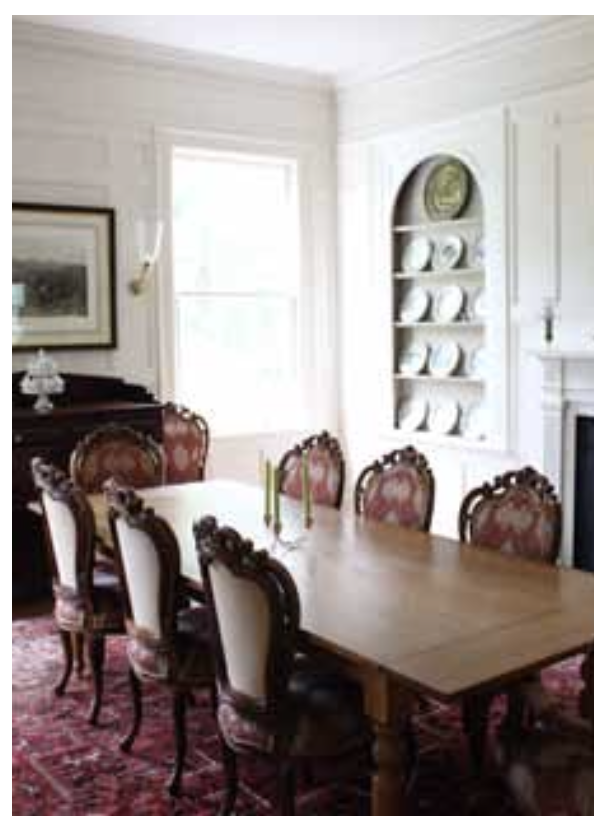
Pam refers to the furnishings as a “mish-mash” of family heirlooms, antiques that they picked up through the years, contemporary items and unique pieces that Brandt has made or had made. The result is a perfect balance and creates a home that is as livable as it is lovely. From the dramatic brass grave rubbings that frame the front door to the bowling alley bench that serves as a coffee table in the family room, each piece is thoughtfully placed, and the backstory of each adds rich dimension. The impressive heart-pine dining table seems made for the setting, and that isn’t far from the reality of its creation. “The day we closed on the house, there was a terrific thunderstorm, and lightning struck two huge, hundred-year-old pines. Brandt had them milled, and this table was made from the lumber.”
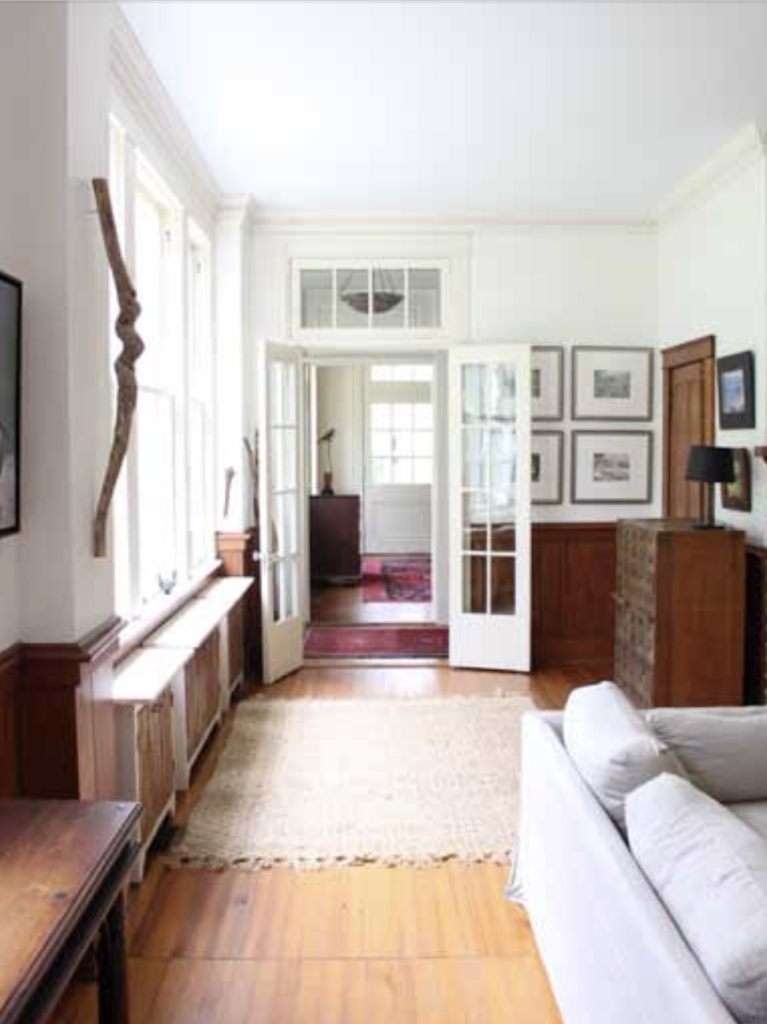
Brandt describes the construction of all the structures as what one would imagine befitting a man who made his living in lumber. “The beams and joists are incredibly huge, solid, heart pine, and the siding is also heart pine.” In fact, the entire house seems a subtle homage to the tree that Summerville still holds sacred and those that bring color and texture to the landscape of the Lowcountry. The library, a room that Prettyman designed specifically to host weekly poker games, is a celebration of cypress added in the 1950s. “Mr. Prettyman intentionally dropped the ceilings to create a dark, smoky, back-room feel. We raised them up, but you can see how low they once were. Imagine the wheeling and dealing that took place in there!”
The Shelbournes also reopened the door that fronts Richardson Avenue. Inexplicably boarded over by the second Mrs. Prettyman, the front door now opens once again into the formal living room. Large windows throughout the house are paned with their original wavy glass and illuminate every room. Those that overlook the wide porch on the family room side of the house filter light onto the room’s unique Pecky Cypress wainscoting, created from trees pulled from Lake Moultrie. The characteristic worm-eaten surface of the panels is as strikingly beautiful as it is distinctive. Brandt recalls when the children were small and would ride their bikes through the house. “Thankfully, that cypress is also very forgiving!”
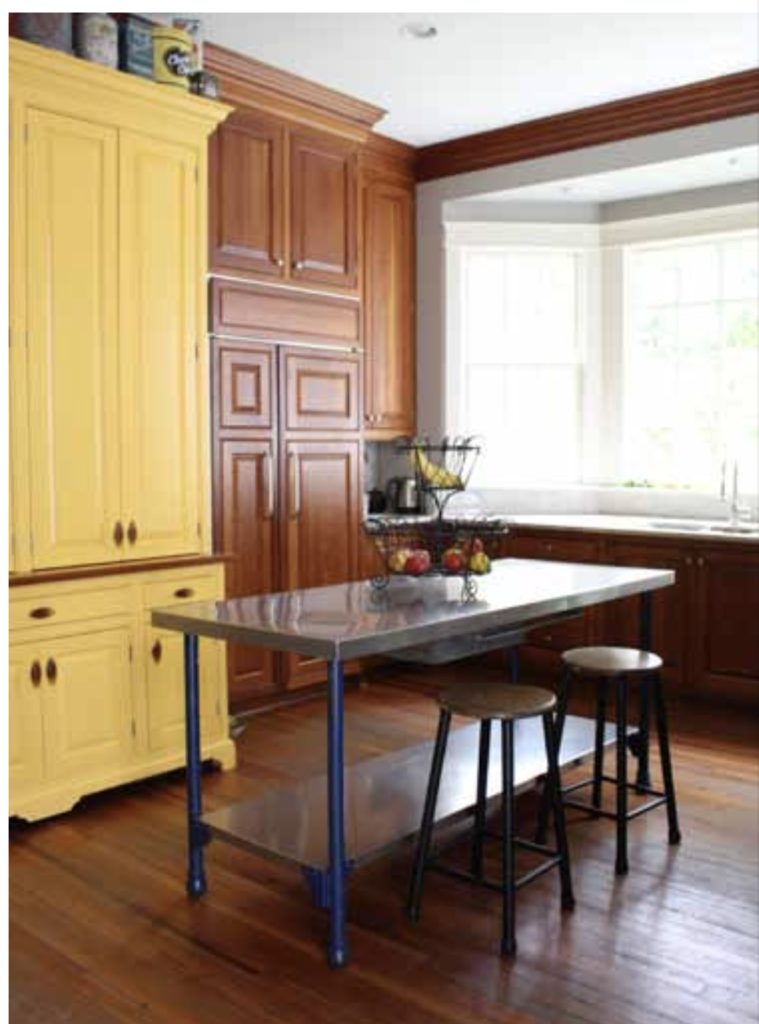
The large, refurbished kitchen, flooded with natural light from bay windows, is another indicator of vibrant family life within the historic residence. Here, a bright yellow cabinet and a repurposed stainless-steel industrial table offer modern touches that meld perfectly into the century-old home. At his mother’s urging, Sloan, the Shelbourne’s youngest son, pauses from making a cup of tea at the stove to share the outstandingly detailed photographs he has taken on the property, cataloging its wide variety of camellias. “There are fifty-five different species,” he says, scrolling through the pictures, “The variety of colors is amazing.”
Artwork, including Felicity’s hand-drawn doodles on the hallway’s chalkboard wall, reflects the family’s varied travels and interests. The flotsam and jetsam of sports equipment is a familiar and comfortable reminder that this is home to a family of unique and active individuals. While the light from the windows offers illumination, an afternoon spent with the Shelbournes makes it clear that much of the home’s light radiates from those who live within its sturdy walls.
Watching their family flourish within the walls of Camellia Walk, the Shelbournes have every reason to look around themselves and knock on wood. Thanks to a lumberman who built a place for himself in the history of Flowertown in the Pines, they don’t have to look far to find a place to do so.
By Susan Frampton

